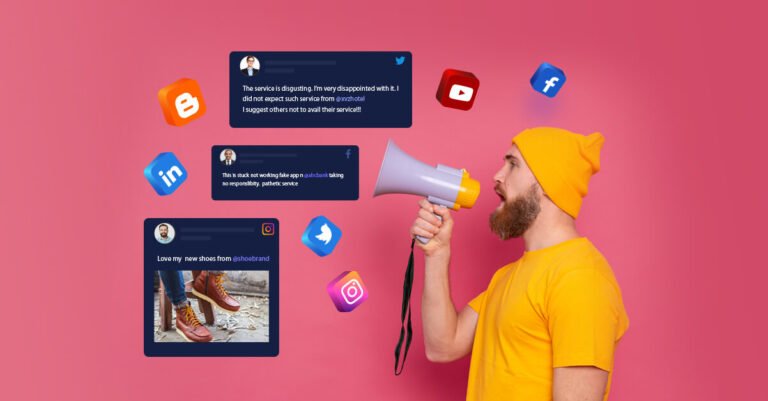The Rise of Generative AI in Content Creation
Generative AI is transforming the way brands, creators, and businesses develop content across various formats, including text, images, audio, and video. These systems, particularly advanced models like GPT-4, have quickly evolved from conceptual tools to essential components of digital marketing and content creation strategies.
By 2025, rise of Generative AI is expected to play an even larger role, allowing companies to meet content demands more efficiently and maintain a steady stream of high-quality material.
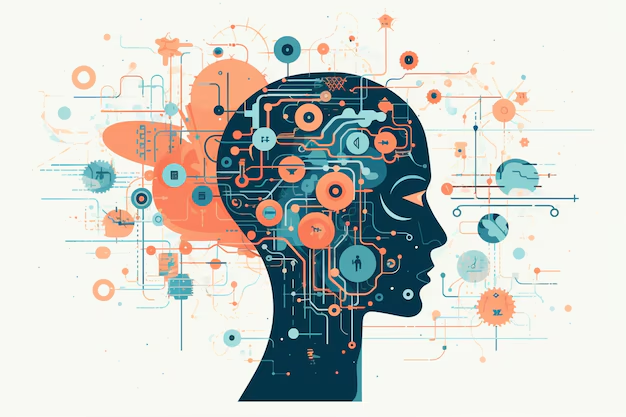
Evolution of AI in Content Creation
AI in content creation has its roots in basic automation tools, which started with simpler applications like grammar checking, keyword optimization, and templated responses. As AI technology progressed, these tools became more sophisticated, eventually giving rise to generative AI capable of producing coherent, creative, and contextually relevant material that feels authentically human.
From Automation to Generative AI: Key Milestones
- Early Automation: Programs for spelling, grammar, and syntax, like Grammarly and Microsoft Word’s editorfeatures, were some of the first AI tools applied in content.
- Natural Language Processing (NLP): With advancements in NLP, tools could now understand context, helping with sentiment analysis, keyword suggestions, and topic relevance.
- Introduction of Transformer Models: Models like GPT-2 and GPT-3 marked a new era, generating text-based content autonomously. By analyzing large data sets, these models could write complete articles and dialogues.
- GPT-4 and Advanced Generative Models: With GPT-4, OpenAI has set a high standard for content generation, allowing the creation of complex, multi-layered narratives and analyses with minimal human input.
How Generative AI Works
Generative AI is based on machine learning techniques, primarily transformer models, which use massive datasets to learn language patterns, context, and structure. Generative models analyze this data to produce new content that is contextually accurate and engaging.
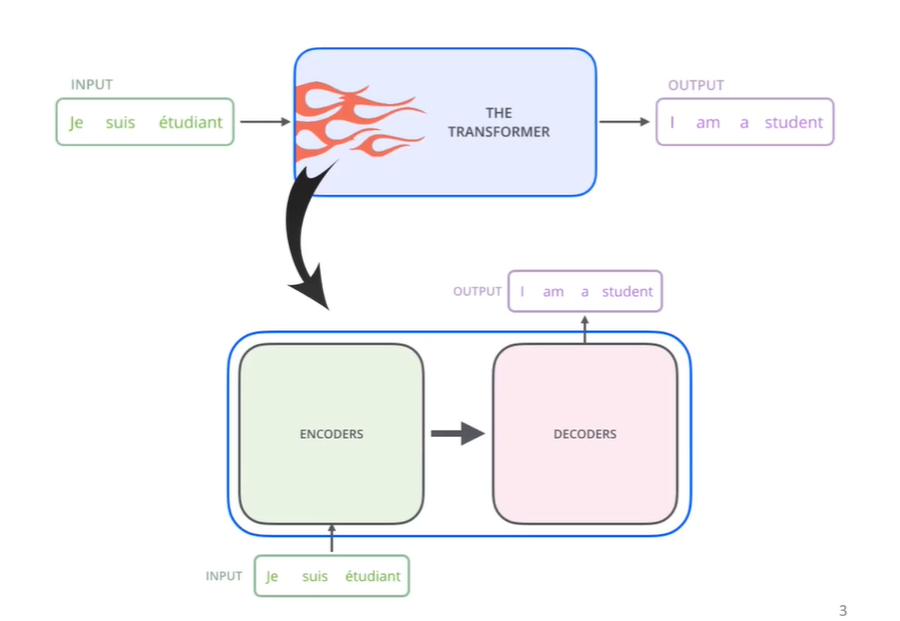
Key Technologies Behind Generative AI
- Transformers: Transformers like those used in GPT-4 handle extensive language tasks, analyzing patterns and meaning from vast datasets.
- Language Models (e.g., GPT-4): These models are trained on diverse data, allowing them to understand nuances, generate conversational responses, and maintain context.
- DALL-E and Other Visual Generative Models: DALL-E specializes in generating images from text descriptions, making it suitable for visual content in marketing, web design, and creative media.
Benefits of Generative AI in Content Creation
Generative AI has several advantages that are highly attractive to businesses and marketers. These benefits include speed, scalability, creative ideation, cost-efficiency, and customization.
Speed and Scalability
Generative AI allows content teams to create high volumes of material in a fraction of the time traditionally required. Whether it’s generating multiple social media posts, drafting blog articles, or designing visual assets, AI tools can streamline the entire content creation process.
Enhanced Creativity and Idea Generation
AI is especially valuable during the brainstorming phase, where it can generate ideas quickly. For example, marketers can ask an AI tool to produce a list of blog topics or even create outlines for articles, saving time and fostering creativity.
Cost-Efficiency in Content Production
By reducing the need for extensive drafting and revisions, generative AI minimizes the resources required for content production. Instead of outsourcing or hiring multiple team members, businesses can use AI to handle some or all of the creation process.
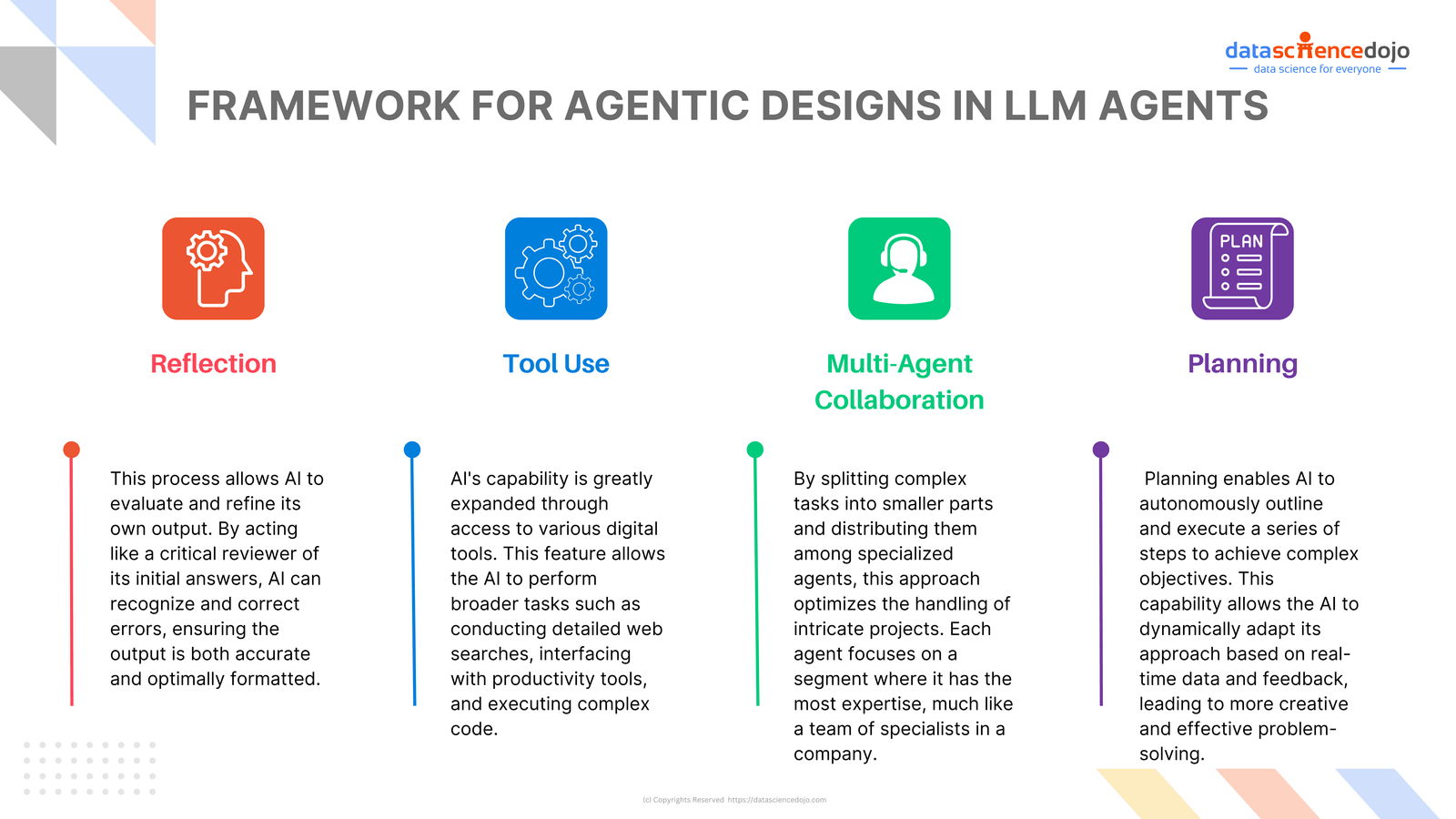
Role of GPT-4 and Successors in Content Creation
GPT-4 is one of the most powerful generative AI models, known for its ability to produce accurate, nuanced, and well-structured content. It can perform various tasks, from writing engaging social media posts to producing in-depth blog articles and even generating scripts for video content.
Future Potential of Advanced Generative Models
Generative models are constantly evolving, and future iterations are likely to exceed GPT-4 in capabilities. Expected advancements include:
- Real-time Collaboration: AI will assist in live brainstorming sessions and strategy meetings.
- Enhanced Visual Content Production: AI models will be able to generate entire multimedia presentations or simple animated videos based on text prompts.
- Complex Language Translation: AI will support instant translation while maintaining tone and cultural context, making content accessible to diverse audiences.
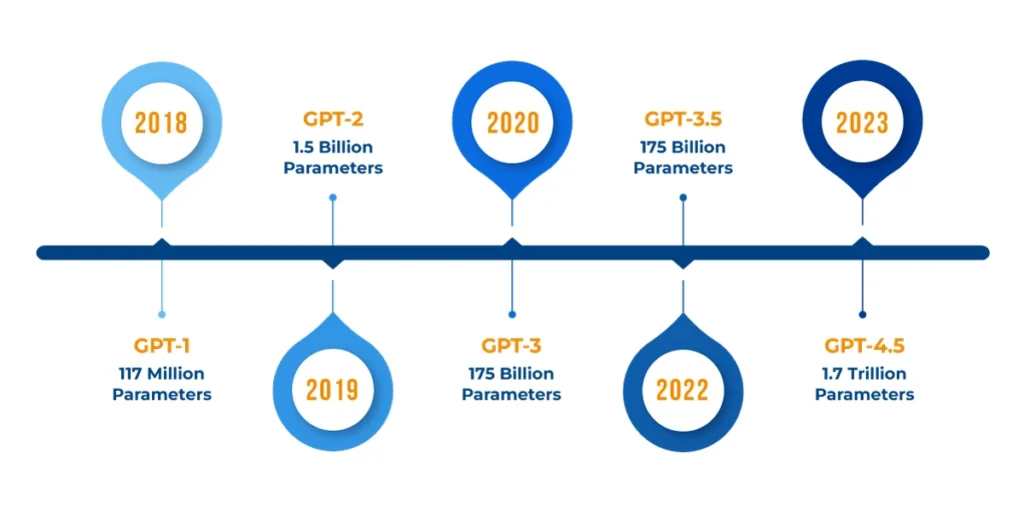
H2: AI-Powered Tools Transforming Content Creation
Several AI tools are leading the transformation in content creation, each specialized in various aspects of writing, visual content, and more.
| Tool | Specialty | Use Cases |
|---|---|---|
| Jasper | Writing and content generation | Creating blog posts, ad copy, and social media captions |
| Copy.ai | Marketing copy for emails, product descriptions, etc. | Email marketing, e-commerce descriptions, landing page content |
| Midjourney | High-quality visual content creation from text prompts | Generating unique graphics, concept art, and social media visuals |
| Synthesia | Video generation based on text scripts | Creating explainer videos, presentations, and video-based customer support |
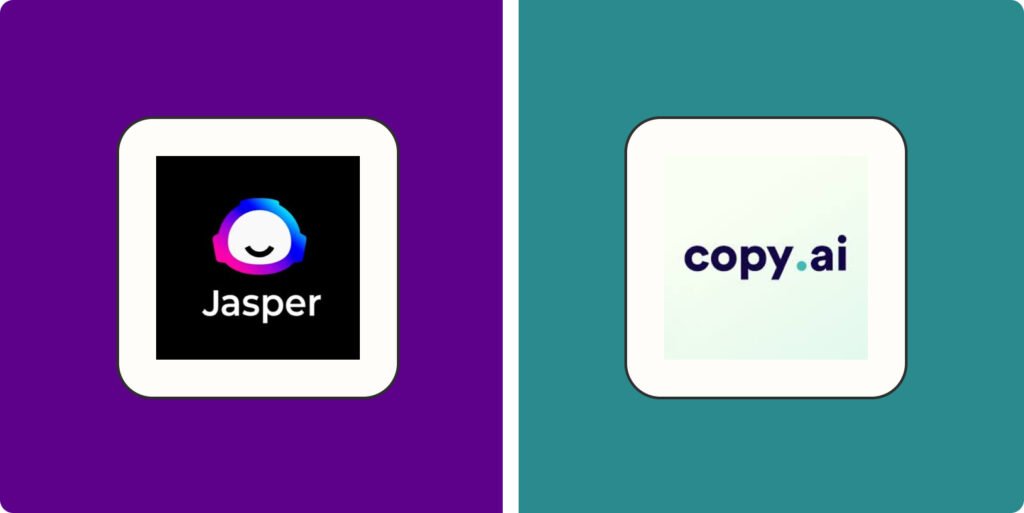
Generative AI Applications in Marketing
In marketing, generative AI offers a robust set of tools for creating varied types of content, enabling brands to interact with their audiences across channels consistently.
Social Media Content Creation
Social media is an area where generative AI truly shines. AI can generate posts for different platforms, draft captions, suggest hashtags, and even create visuals. For instance, Jasper and Copy.ai allow users to produce engaging social media posts optimized for platforms like Instagram, Twitter, and LinkedIn.
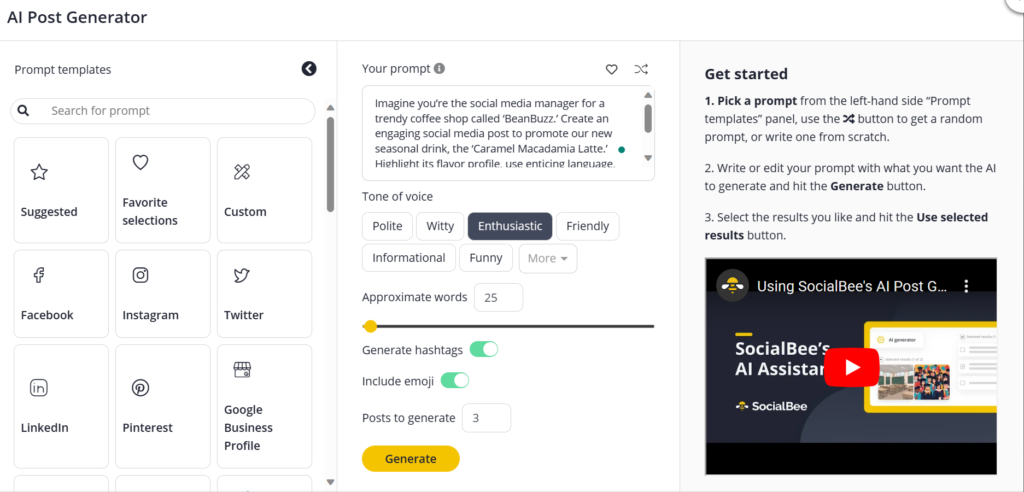
Blog and Article Creation
Writing long-form content like blogs can be time-intensive. With AI tools, marketers can quickly generate article ideas, outlines, and even full drafts. For example, AI models like GPT-4 can produce detailed, high-quality content that requires minimal editing.
SEO Optimization
Generative AI models are equipped with SEO capabilities, including keyword suggestions, meta descriptions, and structured content formatting, which align with current search engine algorithms. This can help websites improve visibility and rank higher on search engines without needing an in-depth understanding of SEO techniques.

Leveraging AI for Content Ideation and Planning
Content ideation and planning can often feel like a guessing game, but AI changes this by offering targeted suggestions based on audience behavior, industry trends, and competitor analysis.
Automated Brainstorming Sessions
Using generative AI for ideation allows teams to generate dozens of potential topics quickly, which can be especially helpful for social media or blog content calendars.

AI-Enhanced Content Calendars
AI tools can help organize content ideas into a structured calendar. For instance, platforms like HubSpot and ContentBot offer AI-powered content planning features that suggest optimal posting times, content formats, and themes based on historical data.
Challenges of Generative AI in Content Creation
While generative AI offers numerous benefits, it also presents several challenges that content creators and brands need to navigate carefully.
Quality Control and Accuracy
AI models are not infallible and may produce content with inaccuracies or inconsistencies. It’s essential to include human oversight to review and refine AI-generated content, particularly in sensitive or factual areas.

Ethical Concerns and AI Bias
Generative AI models can inadvertently reflect biases present in the data they’re trained on. This can lead to content that unintentionally reinforces stereotypes or misinformation, posing a significant ethical challenge for businesses and creators.
Generative AI and the Future of Creative Industries
Generative AI has far-reaching implications across creative fields, including journalism, graphic design, video production, and art. As AI models become more sophisticated, they’ll likely handle more complex creative tasks, allowing professionals to focus on strategic and conceptual elements of their work.
Journalism and Content Creation
Generative AI tools are already being used in journalism to write summaries, generate quotes, and even draft initial news reports. The potential of AI to handle rapid content production means journalists can focus on investigative work and storytelling.

Video and Audio Production
Tools like Synthesia and Descript are redefining how video and audio content is produced. With AI, users can generate explainer videos, promotional content, and even podcasts based on scripts, without needing a full production team.
Best Practices for Using Generative AI in Content
To get the most out of generative AI while maintaining quality and originality, consider the following best practices:
- Balance AI and Human Input: Use AI for initial drafts, but involve human editors to refine and personalize the content.
- Ensure Originality and Uniqueness: Regularly check AI-generated content to ensure it’s unique, preventing potential SEO penalties.
- Maintain Transparency: Clearly indicate when content is AI-generated to build audience trust and maintain authenticity.
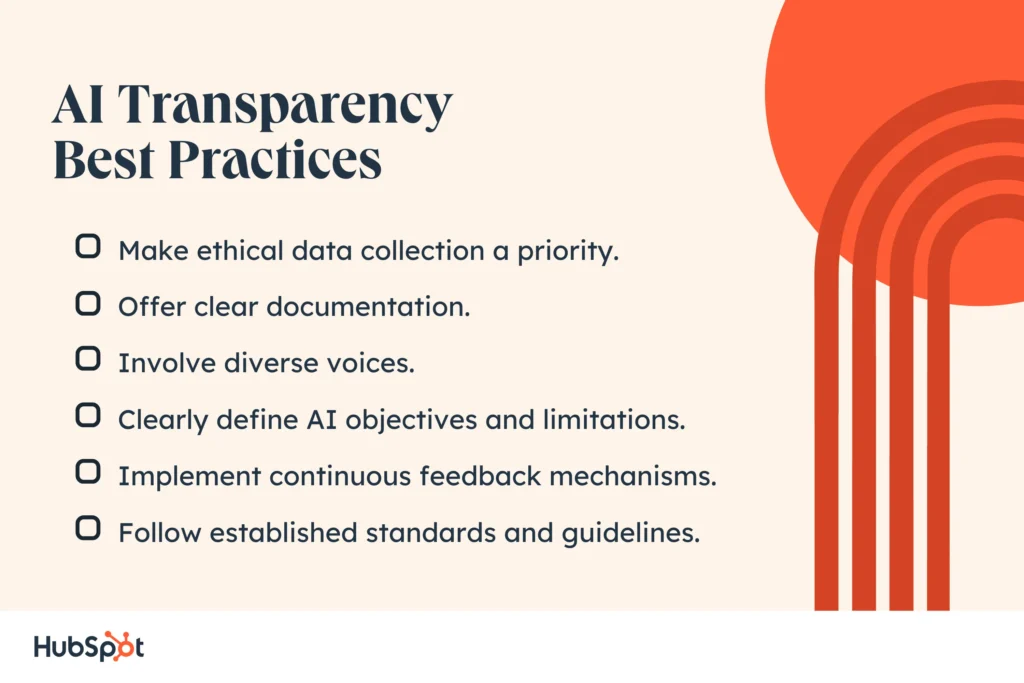
Case Studies: Successful AI-Driven Campaigns
| Company | Campaign | AI Tool Used | Outcome |
|---|---|---|---|
| Nike | Social Media Engagement | Jasper | Achieved high engagement rates through daily AI-generated posts. |
| HubSpot | Blog Content Production | Copy.ai | Reduced blog creation time by 40%, allowing more frequent posts. |

Predictions for AI in Content Creation by 2025
As generative AI continues to evolve, the possibilities for content creation will expand. By 2025, AI is expected to handle more personalized, interactive content, including immersive VR experiences and real-time customer support.
Action Steps: Leveraging Generative AI Effectively
Getting Started with AI in Your Content Workflow
- Select the Right Tool: Determine which AI platform fits your content needs, whether for text, visuals, or multimedia.
- Experiment and Customize: Use sample data to see how the tool handles different types of content.
- Incorporate Feedback Loops: Use analytics to measure the effectiveness of AI-generated content and make adjustments as needed.
- Balance Automation with Personalization: Rely on AI for bulk tasks but personalize where needed.
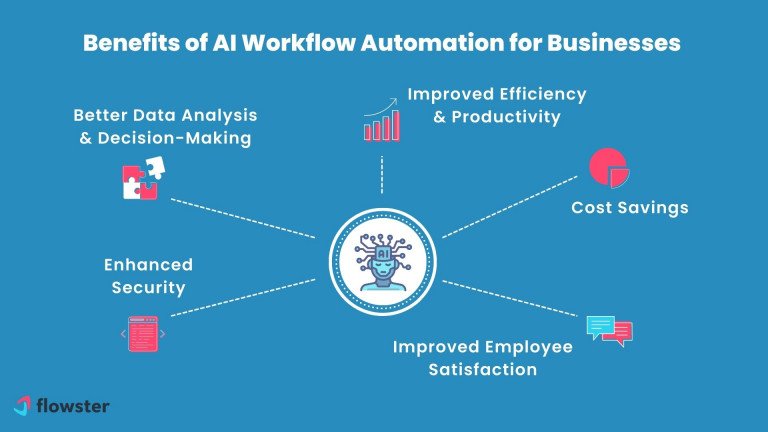
Ethical and Privacy Concerns in AI Content
As AI tools become a more integral part of content strategies, brands must consider ethical issues like data privacy, transparency, and content authenticity.
Conclusion: Embracing AI’s Role in Content Creation
Generative AI has the power to transform content creation, bringing efficiency, creativity, and scalability to new heights. While challenges exist, the potential for AI to enhance and support content creators is vast. By embracing generative AI strategically and ethically, brands and creators can remain competitive, innovative, and aligned with future trends in digital media.
FAQs About Generative AI in Content Creation
Disclosure: Our blog contains affiliate links to products. We may receive a commission for purchases made through these links. However, this does not impact our reviews and comparisons. We try our best to keep things fair and balanced, in order to help you make the best choice for you.






